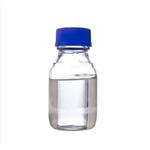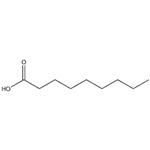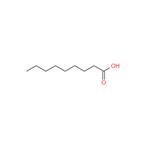Chemical Properties
When in liquid form, it is almost colourless and with a characteristic odour.
Uses
Fatty acids, C8-10 is mainly applied to the manufacture of: Amines, esters, fatty alcohols, peroxides, fragrances, flavors, surface finishing, lubricants, metal soaps, cosmetics, animal feed, chemical, paper, plastics, detergents, chemicals, resins and coatings.
Definition
ChEBI: Nonanoic acid is a C9 straight-chain saturated fatty acid which occurs naturally as esters of the oil of pelargonium. Has antifungal properties, and is also used as a herbicide as well as in the preparation of plasticisers and lacquers. It has a role as an antifeedant, a plant metabolite, a Daphnia magna metabolite and an algal metabolite. It is a straight-chain saturated fatty acid and a medium-chain fatty acid. It is a conjugate acid of a nonanoate. It derives from a hydride of a nonane.
Preparation
Fatty acids, C8-10 is obtained from fractionation of a lauric-type oil.
Flammability and Explosibility
Non flammable
Biological Activity
Capric acid and caprylic acid are the dietary food components. They are found to inhibit virulence factors like morphogenesis, adhesion, and biofilm formation in the human pathogenic yeast Candida albicans. Jadhav's study demonstrated that capric acid and caprylic acid affected yeast-to-hyphal signal transduction pathways. The expression profile of genes associated with serum-induced morphogenesis showed reduced expressions of Cdc35, Hwp1, Hst7, and Cph1 by the treatment with both fatty acids. The cell elongation gene, Ece1, was surprisingly downregulated by 5208-fold by caprylic acid treatment. Nrg1 and Tup1, negative regulators of hyphal formation, were overexpressed in the presence of capric or caprylic acid[1].
References
[1] Ashwini Jadhav. “The Dietary Food Components Capric Acid and Caprylic Acid Inhibit Virulence Factors in Candida albicans Through Multitargeting.” Journal of medicinal food 20 11 (2017): 1083–1090.



